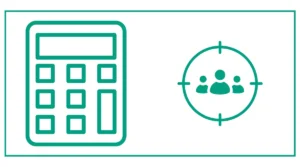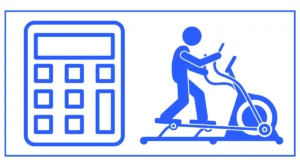Estimate the finishing time for your next race
Do you want to find your running pace, speed, predicted finishing time, or adjusted running pace?
The running pace calculator allows you to find all the required data. Enter your previous race results, like race distance and time. You can find the predicted time and adjusted running pace by entering your next race distance.
You can use running split and v02 calculators for more running calculations.
What is a Running Pace Calculator?
A running pace calculator is a versatile tool designed to help runners calculate various aspects of their performance. It can determine your pace per mile or kilometer, estimate finish times for different race distances, and even help you set appropriate training paces. By inputting basic information such as distance and time, you can quickly obtain valuable insights to guide your running journey.
How to Use This Pace Calculator
Our pace calculator is designed with user-friendliness in mind. Here’s a step-by-step guide on how to use it:
- Enter the distance of your previous race in kilometers.
- Input the time you achieved in that race, broken down into hours, minutes, and seconds.
- Specify the distance of your next race or target distance.
- Click the “Calculate” button.
The calculator will then provide you with the following information:
- Your running pace from the previous race (in minutes and seconds per kilometer)
- Your average speed (in kilometers per hour)
- A predicted finishing time for your next race
- An adjusted running pace for the new distance
This information can be invaluable for setting realistic goals and planning your training effectively.
Understanding Your Results
Running Pace
Your running pace is typically expressed in minutes and seconds per mile or kilometer. For example, a pace of 5 minutes and 30 seconds per kilometer means you’re running each kilometer in 5 minutes and 30 seconds. This metric is particularly useful for maintaining consistency during your runs and races.
Average Speed
While runners typically focus on pace, knowing your average speed in kilometers per hour can provide a different perspective on your performance. It can be especially helpful when comparing your running to other forms of exercise or transportation.
Predicted Finishing Time
Based on your performance in a previous race, the calculator estimates how long it might take you to complete a different distance. This prediction assumes you maintain a similar level of effort across distances, which isn’t always the case, especially for longer races like marathons.
Adjusted Running Pace
The calculator also provides an adjusted pace for your new target distance. This takes into account that runners typically slow down over longer distances and speed up for shorter ones.
Applications of the Pace Calculator
Training Pace Planning
One of the most valuable uses of a pace calculator is in determining appropriate training paces. Different types of runs require different paces:
- Easy Runs: These should be done at a comfortable pace, typically 1-2 minutes slower than your 5K race pace.
- Tempo Runs: These are run at a “comfortably hard” pace, often described as your threshold pace. It’s usually about 25-30 seconds slower than your 5K race pace.
- Interval Training: These high-intensity sessions are typically run at or faster than your 5K race pace.
By using the pace calculator to determine your race pace, you can easily calculate these training paces.
Race Time Prediction
If you’re planning to run a new distance, the pace calculator can help you set a realistic goal time. For example, if you’ve run a 10K race, you can use the calculator to estimate your potential half marathon or marathon time. Remember, these predictions become less accurate as the difference between your previous race distance and your target distance increases.
Progress Tracking
By regularly inputting your race times or time trial results into the calculator, you can track your progress over time. Seeing improvements in your pace can be a great motivator to keep training consistently.
Training for Different Race Distances
5K Training
For 5K races, focus on a mix of speed work and endurance training. Your training might include:
- Easy runs: 2-3 times per week at a pace 1-2 minutes slower than your goal 5K pace
- Interval training: Once a week, try 6 x 400m repeats at your goal 5K pace with 90 seconds rest between each
- Tempo runs: Once a week, run 2-3 miles at a pace about 20-30 seconds slower than your 5K race pace
Half Marathon Training
Half marathon training requires a balance of speed and endurance work:
- Long runs: Weekly runs of 10-12 miles at an easy pace (1-2 minutes slower than goal half marathon pace)
- Tempo runs: 4-6 miles at half marathon pace once a week
- Interval training: 6 x 800m at 5K pace with 2-3 minutes rest between each, once a week
Marathon Training
Marathon training emphasizes endurance but still includes some speed work:
- Long runs: Weekly runs building up to 20 miles at an easy pace (1-2 minutes slower than goal marathon pace)
- Marathon pace runs: 6-10 miles at goal marathon pace, once every 2-3 weeks
- Tempo runs: 4-6 miles at half marathon pace, once a week
Remember, these are general guidelines. Always tailor your training plan to your individual needs and consult with a coach if possible.
The Importance of Pacing in Running
Proper pacing is crucial for running success, regardless of the distance. Here’s why:
- Energy Conservation: Starting too fast can deplete your energy stores too quickly, leading to a significant slowdown later in the race.
- Physiological Benefits: Running at a consistent pace helps your body maintain a steady state, which is more efficient than constantly speeding up and slowing down.
- Mental Advantage: Knowing and sticking to your planned pace can boost your confidence and help you stay focused during a race.
- Improved Performance: Studies have shown that even pacing often leads to better overall performance compared to starting fast and slowing down.
Advanced Uses of the Pace Calculator
Negative Splits
Many successful runners aim for negative splits, where they run the second half of a race faster than the first. You can use the pace calculator to plan this strategy:
- Calculate your overall goal pace for the race
- Plan to run the first half of the race slightly slower than this pace
- Aim to run the second half faster, bringing your overall average to your goal pace
Altitude Adjustment
If you’re training at sea level but racing at altitude (or vice versa), you’ll need to adjust your pace expectations. As a general rule, for every 1000 feet of elevation gain, you can expect your pace to slow by about 2-3%. Use the pace calculator to determine your sea-level equivalent pace, then adjust accordingly.
Heart Rate Training
While the pace calculator doesn’t directly incorporate heart rate, you can use it in conjunction with heart rate training. For example:
- Use the calculator to determine your race pace for various distances
- During training runs at these paces, monitor your heart rate
- Use this information to establish heart rate zones for different training intensities
Common Mistakes to Avoid
- Ignoring Terrain: The pace calculator assumes flat terrain. Adjust your expectations for hilly courses.
- Overestimating Abilities: Be realistic when inputting your race times. Using an outlier performance can lead to unrealistic predictions.
- Neglecting Weather: Hot or humid conditions can significantly impact your pace. The calculator doesn’t account for this, so adjust accordingly.
- Forgetting About Recovery: Just because the calculator says you can run a certain pace doesn’t mean you should do so for every run. Easy, recovery runs are crucial for overall training success.
Conclusion
A pace calculator is a valuable tool for runners of all levels. By providing insights into your current performance and helping you set realistic goals, it can be an integral part of your training and race planning. Remember, while the calculator offers useful estimates, running is a complex activity influenced by many factors. Use the calculator as a guide, but also listen to your body and adjust your training and racing strategies as needed.
Whether you’re training for your first 5K or your tenth marathon, understanding and managing your pace is key to achieving your running goals. With this easy-to-use pace calculator and the knowledge of how to apply its results, you’re well-equipped to take your running to the next level. Happy running!





